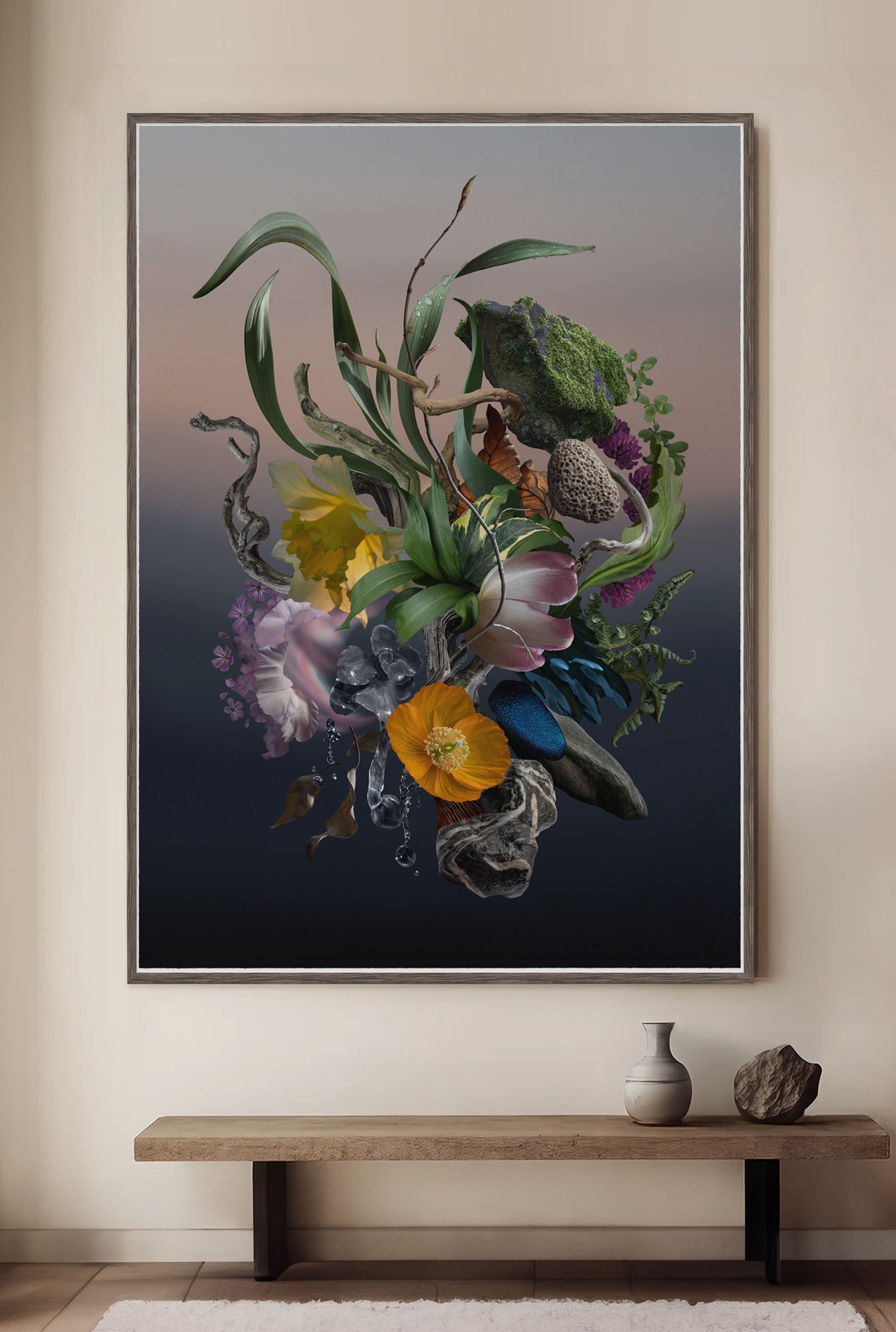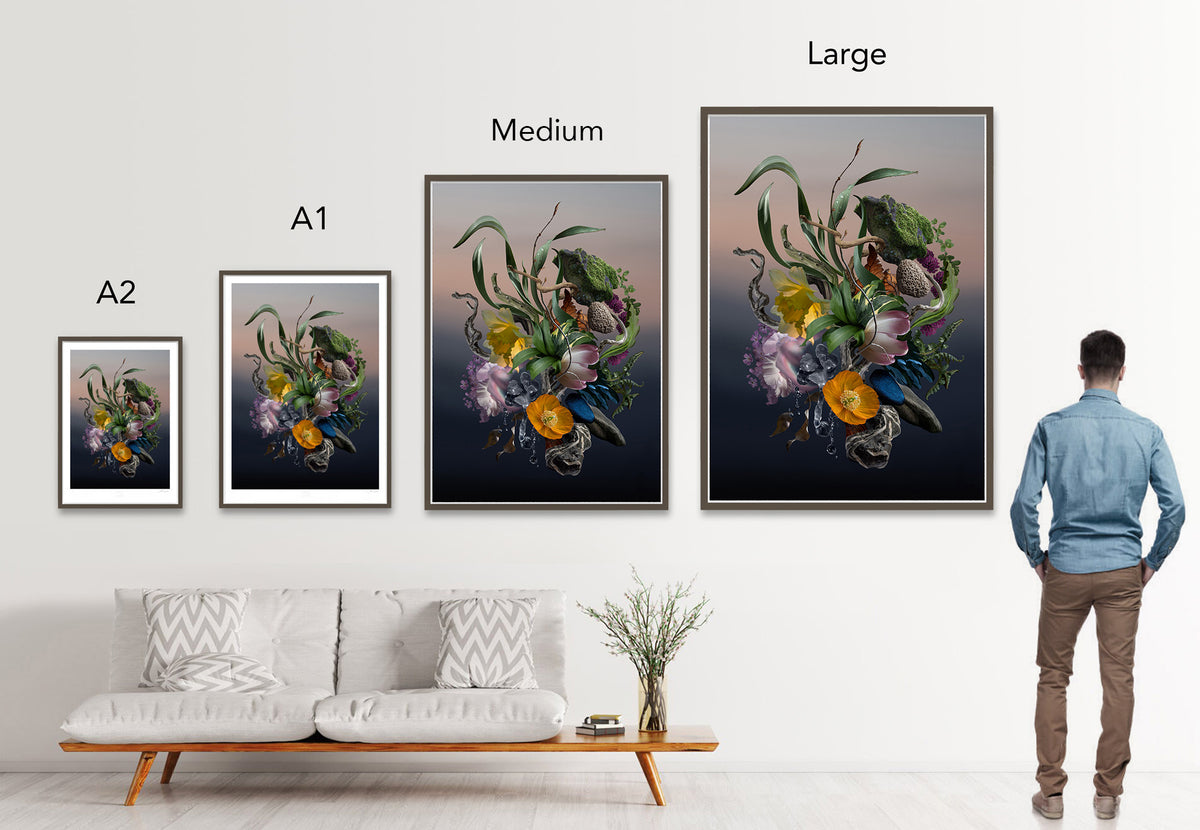
Over the next year I'll be moving into a new chapter in my life in many ways.
I'm moving house.
I'm getting married.
I'm expecting my first child!
Because of this I've felt a strong need to remove all extraneous noise from my life.

With this craving for simplicity, alongside a deeper connection to the natural world via my "Relics of the Wild" series, once again I find myself turning back to Japanese culture for guidance.

In 2018, as part of my "Metanoia" solo show in Manchester, I invited Junko Popham to teach her ikebana workshop in the gallery space.
I took part myself and learned that the focus in ikebana - the Japanese art of flower arranging - is on the qualities of the flowers, not the quantity.
As Junko stated, the aim of ikebana is to make the flowers "dance".
I took part myself and learned that the focus in ikebana - the Japanese art of flower arranging - is on the qualities of the flowers, not the quantity.
As Junko stated, the aim of ikebana is to make the flowers "dance".

The simple arrangements make use of the space between the elements, as well as the forms themselves.
Each element is allowed space to breathe. To shine in its own unique way, without being drowned out by surrounding visual noise.
Each element is allowed space to breathe. To shine in its own unique way, without being drowned out by surrounding visual noise.

Ikebana is also thought to be one of two bridges that form a direct link between the home and the wild world.
The first bridge is the garden. Japanese gardens are designed like a microcosm of the natural world, reflecting the wild landscape beyond the garden walls.
Rocks are arranged like mountains, water features like streams and lakes, and bonsai trees take on the form of their larger counterparts.
The first bridge is the garden. Japanese gardens are designed like a microcosm of the natural world, reflecting the wild landscape beyond the garden walls.
Rocks are arranged like mountains, water features like streams and lakes, and bonsai trees take on the form of their larger counterparts.

The second bridge is when nature is brought directly into the home through the flower arrangements of ikebana.
With these aesthetic sensibilities in mind I composed my newest piece in the "Relics of the Wild" series, entitled Lēah.
With these aesthetic sensibilities in mind I composed my newest piece in the "Relics of the Wild" series, entitled Lēah.

Lēah (pronounced lee-ah) is an old Anglo-Saxon word meaning forest clearing or glade.
The idea of an opening, a space to breathe and take in the light, amongst the dense dark growth of the forest, perfectly encapsulates the feeling I wanted to imbue into this piece.
I've given each element - all taken directly from my own photography - the freedom to breathe. The freedom to dance.
The idea of an opening, a space to breathe and take in the light, amongst the dense dark growth of the forest, perfectly encapsulates the feeling I wanted to imbue into this piece.
I've given each element - all taken directly from my own photography - the freedom to breathe. The freedom to dance.

Lēah is available in 4 sizes to accommodate your desired budget and wall space, giving you the chance to bring nature into the home, ikebana style.
The A1 and A2 sizes come with a border (see example above) and are all hand signed, numbered and embossed with my own unique artist emblem.
The A1 and A2 sizes come with a border (see example above) and are all hand signed, numbered and embossed with my own unique artist emblem.
The largest print size (100cm x 140cm) comes with a special deckled edge to give the print a more tactile quality, perfect for float mounting in a frame.
This size also includes a hand signed and embossed certificate of authenticity verified on the blockchain via Verisart.
Each print size is a limited edition of 10 only.
~

